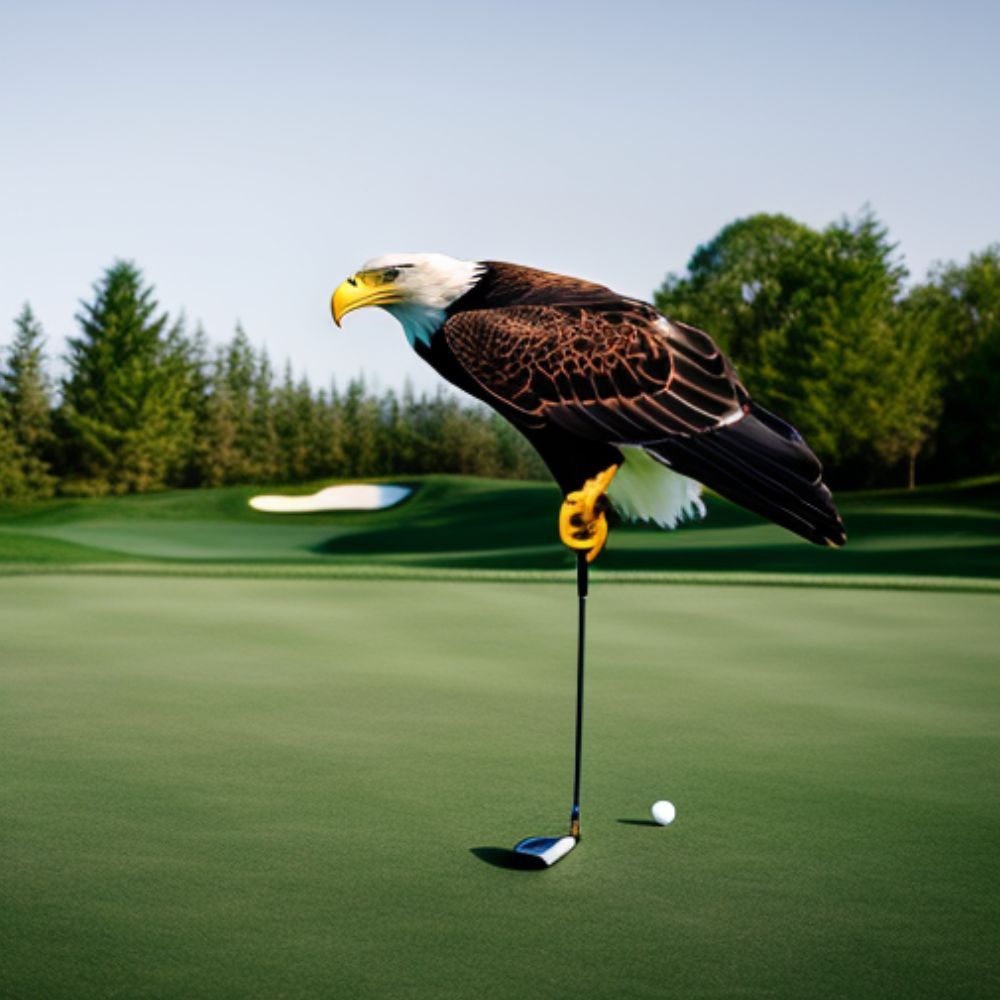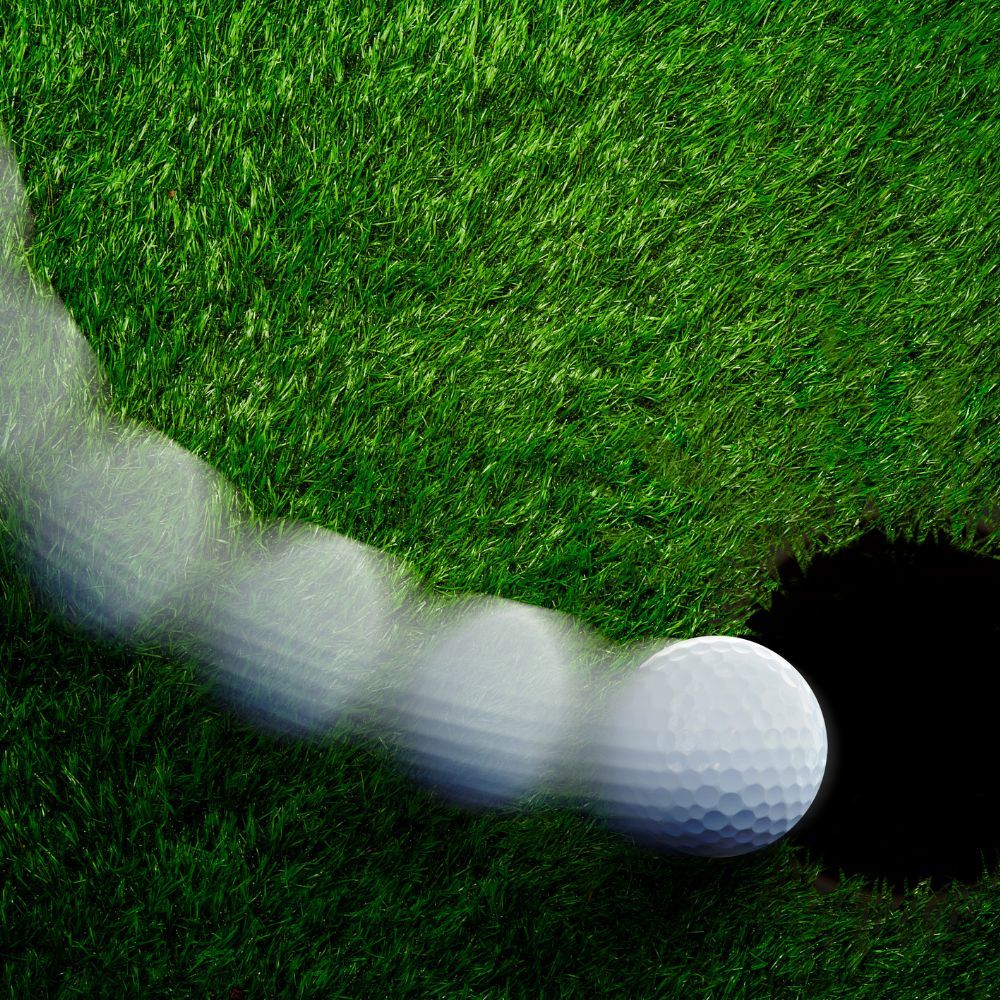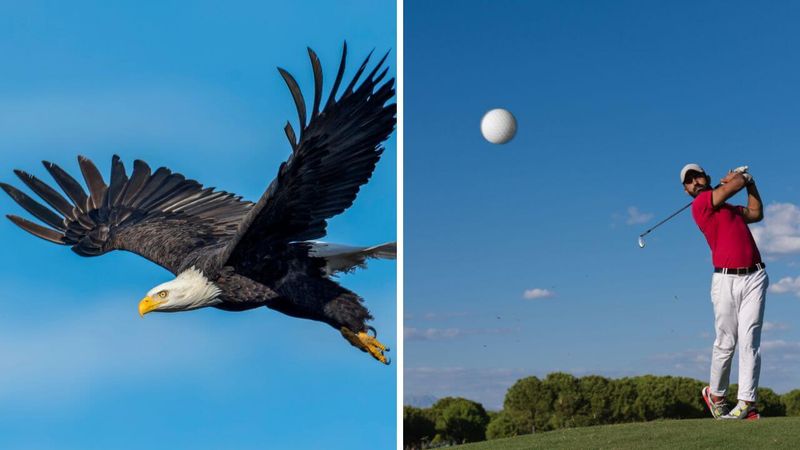Content Summary
What is an Eagle in Golf?
A eagle is defined as achieving two shots below par at a particular hole. Despite their rare nature they are typically made on the par 5 holes of golf courses most frequently.
In 25 years of playing golf, I have had the distinct pleasure of making eagles on both par 4s (2) and 5s (3) and just missed making one on a par 3 (hit the cup and bounced out). To be truthful, a lot of luck went into making those eagles. I didn't start the hole with the intention of making an eagle but got the lucky break when the golf ball dropped in the golf hole with each one.
How Many Strokes Do You Need to Score an Eagle in Golf?
Scoring a golf eagle is one of the most exhilarating achievements in the game. An eagle requires two strokes fewer than the par, which makes it a difficult but rewarding feat.
To score an eagle on any hole, you must make sure your first shot is as close to the pin as possible. The exception here is a par 3 which would also be a hole in one for two strokes under par.
This ensures that you have a chance to hit your second (par 4) or third shot (par 5) into the cup for an eagle. When approaching your eagle shot, make sure you are using a club you are comfortable with and that will allow you to get close to the pin for a chance at eagle.
Depending on how far out from the pin your shot landed will determine which club should be used for this particular situation. It's important to take into account factors such as wind direction and speed when deciding what club to use and how hard to hit it. With practice and patience and improving your golf skills, being able to achieve an eagle more often is definitely possible!
The two under par rule:
- For a 3-par hole, in a single stroke (also known as a hole in one or single eagle shot)
- For a 4-par hole, in two strokes
- For a 5-par hole, in three strokes
- For a 6-par hole, in four strokes

Want to Improve Your Score Even More?
Try practicing with making eagles as your objective. This means hitting long straight drives with your tee shot, great fairway wood shots and accurate iron shots. In order to get more eagles you need to hit the ball farther off the tee and in the fairway.
Firstly, you'll need to work on your long game. Make sure that your drives are landing consistently and straight; otherwise, it will be much harder to line up a good approach shot.
You can practice by getting out onto the range and hitting balls with different clubs; for example, try aiming for a certain target about 200 yards away with a driver or fairway wood. Experiment with different swings and grips until you find something that works for you, then practice it regularly until it becomes second nature.
Secondly, work on improving your accuracy when approaching the green. Focus on making small adjustments to get closer to the hole each time you hit an iron shot. For instance, if you’re consistently overshooting the green, adjust your swing so that the ball lands just short of the green instead of going past it every time.
When practicing this aspect of golfing technique make sure not to overdo it; take breaks between shots so that your muscles don't become too tired and affect your accuracy negatively.
Finally, hone in on those all-important putting skills! The key here is confidence – learn how far away from the hole each putt will have to travel before taking a shot and trust yourself when making contact with the ball.
Visualize where you want it to land before beginning your approach stroke and focus on executing each putt correctly – remember: even one small mistake can cost you an eagle and maybe your best ever golf score!
You will still require a bit of luck to make an eagle but maybe just a bit less so with a solid golf game.
Opposite of an Eagle
The opposite of an eagle is the double bogey which is 2 strokes over par. The origin of the word "bogey" is uncertain, but some believe it originated in Scotland in the late 19th century.
One theory suggests that the term bogey came from an old Scottish song called "The Bogey Man," which was about a mythical creature who would play pranks on people. It's possible that this song inspired golfers to use the term for their own game.
Another theory suggests that the term comes from an English soldier named Colonel Bogey, who was known for playing golf and setting high standards for himself. His name may have been adopted by other players as a way to describe their own scores.
Regardless of its origin, the term bogey has become an integral part of golfing culture, and it is still widely used today when referring to one-over par.
Where Does the Term Eagle Come From?
The term "eagle" has never really been officially defined before. However, there is a common way that the two birds can be related together. When the term "bird" was invented in the early 1800s the term was usually used to imply something cool and with an amazing quality.
It eventually found it's way into golf in the early 1900s as a "birdie" when someone finished a hole in 1 under par and so it's easy to see why the word eagle meant something even cooler in this context.
This "eagle" term is from the United States. It is believed It originated at the 1904 United States Amateur Championship. Walter J. Travis won the tournament. He made an eagle on his 5th hole in the 2nd round. After he sunk his putt, he was said to have "flown the coop". That's when "the bald eagle" nickname was born.
How Rare is an Eagle in Golf?
The exact percentage of golf eagles made in a year is difficult to determine, as it depends on the skill level of the golfer and the difficulty of the golf course they are playing.
However, some of the research I've done indicates the average golfer will make an eagle (two strokes under par) once every 44 rounds. This means that the average golfer makes an eagle about 2.3% of the time.
For professional golfers, this number is much higher. PGA Tour players make an eagle roughly 10% of the time, while those playing on the LPGA Tour make an eagle around 8% of the time. These numbers are likely higher due to their superior skill level and more consistent play compared to amateur golfers.
From my own experience and since I was unable to specifically find statistical information validating any of these numbers, I would take this with a grain of salt.
Eagles are rare birds! But with some knowledge and patience, you might join their ranks someday.

On Which Par is an Eagle Shot Most Common?
Eagling is a feat that all golfers strive to achieve. Any hole can have an eagle, but some par numbers are better than others. From what I have witnessed par 5s are where most eagles are made.
How to Get an Eagle Shot on Shorter Holes
Getting an eagle shot on shorter holes is just a bit easier than regular holes! You need a long, strong drive and accuracy. Here are tips to help:
- Drive on the widest part of the fairway for maximum distance and accuracy.
- Positioning of the ball is dependent on which club you are using, choose accordingly.
- Choose the right club length based on how much of the green is visible and how far away you are from the flagstick.
- Visualize where you want the ball to land first, then adjust angles depending on yardage and shapes of green.
- Stay focused and execute with intentionality. This will help you avoid mistakes.
What is a Double Eagle or Albatross in Golf?
A Double Eagle or Albatross is an extremely rare and impressive feat in golf. It happens when a golfer completes a hole in three strokes under par, which is two strokes less than the standard par score. A Double Eagle or Albatross is one of the most difficult shots to make in golf and usually requires a combination of skill, luck, and perfect timing.
The term “Double Eagle” was first used in 1933 when Gene Sarazen made a double eagle at the Masters Tournament. Since then, there have only been a handful of double eagles reported at professional tournaments. In addition to being incredibly rare, it is also very difficult to replicate; even the best golfers have difficulty making this shot consistently.
Making a Double Eagle or Albatross is considered one of the greatest accomplishments in golf and can be seen as a sign of tremendous skill or luck. Take your choice.
What About a Condor?
A condor in golf is a score of four under par on a single hole. This is achieved by getting a hole-in-one on a par 5, which is the longest and hardest type of hole. Such a score is a lifetime memory.
It is considered a very rare bird and one of the most difficult shots to make in golf, as it requires accuracy and distance control. Achieving a condor can be an incredibly rewarding experience for any golfer, as it is one of the few ways to achieve an eagle or better on a single hole.
Conclusion
An eagle golf shot is an impressive feat that requires skill and dedication. Staying patient and consistent with your practice routine are key to mastering the game of golf. Start by focusing on technique and form before attempting more complex shots.
Remember to have fun while playing! Golf is a challenging game, but it can be enjoyed by players of all levels of experience if you make it a priority to stay focused and have fun.
Finally, achieving an eagle in golf may seem like an impossible task at first, but with enough practice and determination, anything is possible!
Thank you for visiting, and we hope to see you back soon!








